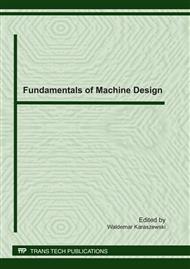p.257
p.265
p.273
p.282
p.288
p.296
p.305
p.312
p.323
The Method of Finite Differences in Solutions Concerning Circular Plate
Abstract:
Finite difference method in solving classic problems in theory of plates is considered a standard one [1], [2], [3], [4]. The above refers mainly to solutions in right-angle coordinates. For circular plates, for which the use of polar coordinates is the best option, the question of classic plate deflection gets complicated. In accordance with mathematical rules the passage from partial differentials to final differences seems firm. Still final formulas both for the equation (1), as well as for border conditions of circular plate obtained in this study and in the study [3] differ considerably. The paper describes in detail necessary mathematical calculations. The final results are presented in identical form as in the study [3]. Difference of results as well as the length of arm in passage from partial differentials to finite differences for mixed derivatives are discussed. Generalizations resulting from these discussions are presented. This preliminary proceeding has the purpose of searching for solutions to technical problems in machine building and construction, in particular finding a solution to the question of distribution of load along contact line in worm gearing.
Info:
Periodical:
Pages:
305-311
Citation:
Online since:
September 2011
Authors:
Keywords:
Price:
Сopyright:
© 2012 Trans Tech Publications Ltd. All Rights Reserved
Share:
Citation:


